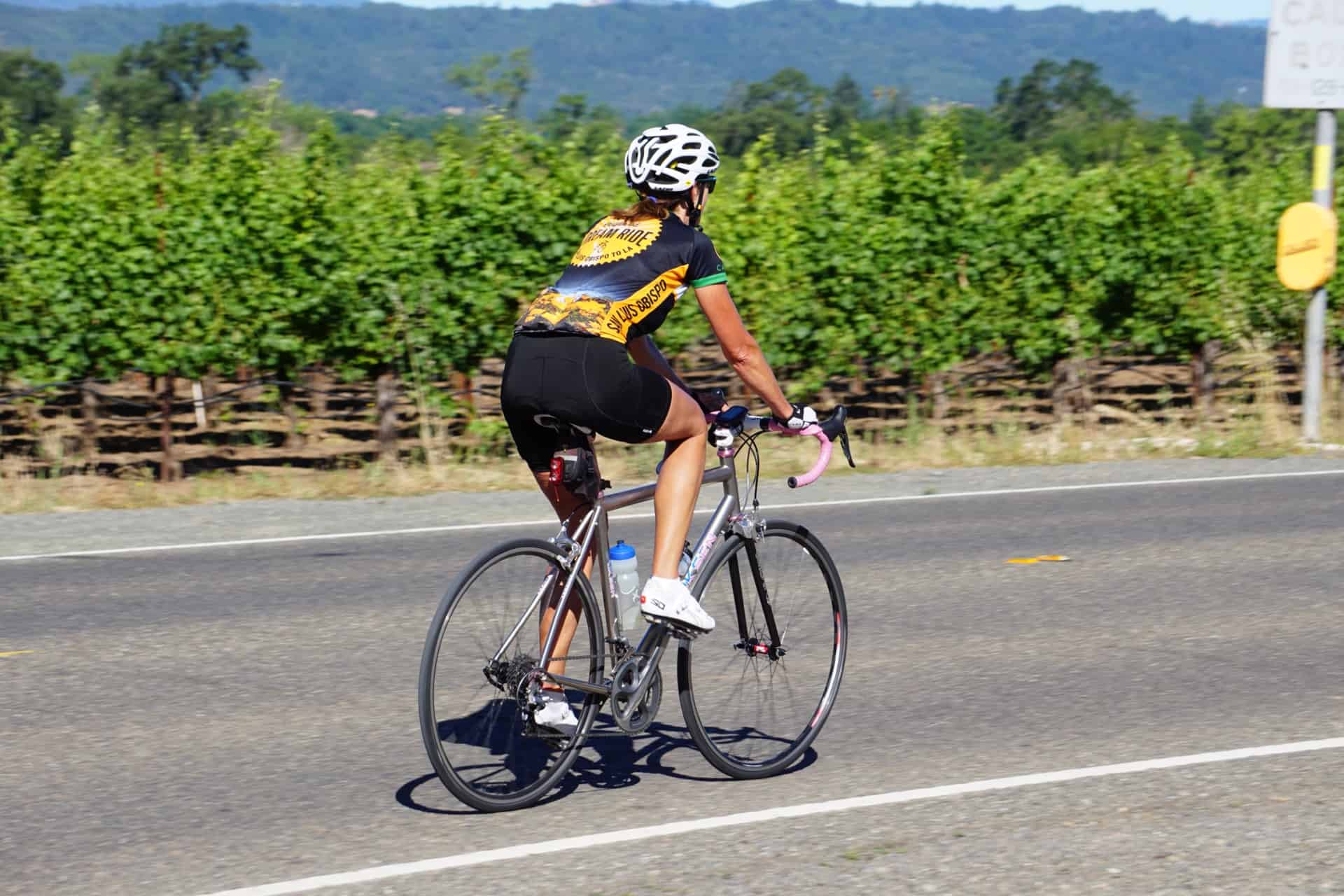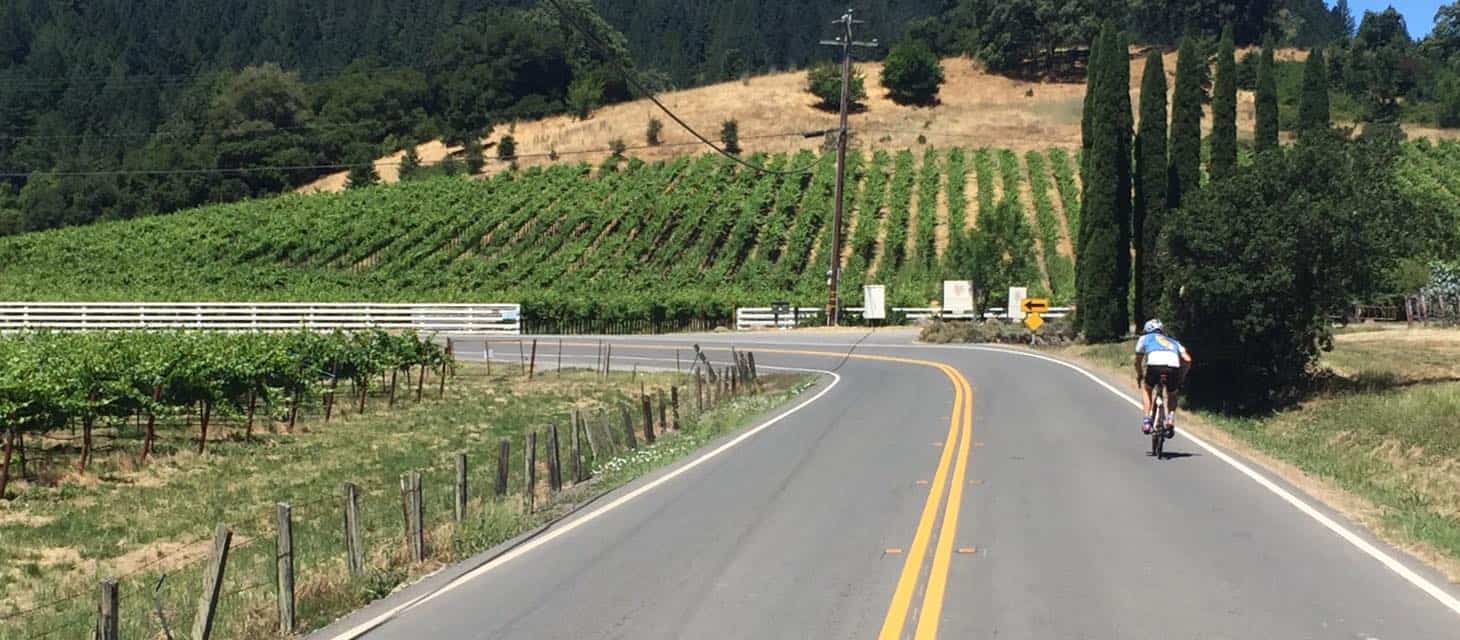2017 California Dream Ride Preview: Day 3
The Dream Ride staff continues working hard, planning and organizing each day’s route, lodging and activities. This is the second of several posts describing the fruits of those labors: tentative plans for each day on the 2017 Dream Ride. Some details may change between now and October, so stay tuned to this blog or contact the Ride Director Debbie Brubaker for the latest details.
Departing from the overnight stop in Calistoga, Day 3 of the 2017 California Dream Ride will continue following a westward arc of riding through the Dry Creek and Alexander Valley wine regions, arriving in the afternoon at the next overnight in Occidental, a quaint former whistle-stop of a logging railroad town nestled among towering redwoods in the coastal foothills west of Santa Rosa. Along the way, the tour will visit some of the farming and logging towns that have figured in the early days of Northern California’s development: Calistoga (1876), Healdsburg (1867), Guerneville (circa 1870s) and Monte Rio (circa 1870s). While brewpubs, boutiques and wineries give these towns a cosmopolitan feel, they still retain a lot of their historic charm.

Between these towns, acres and acres of vineyards line each side of the roads that the Ride will follow on the day’s journey. West Dry Creek Road after lunch is quintessential Wine Country riding on country roads over rolling hills, old truss span bridges, and overarching oak trees. All told, the Dream Ride will pass well over 100 of the wineries that make this part of California famous. Naturally there are countless tasting options to be explored! Early October is prime harvesting season, so there is apt to be lots of grape picking to see as well.
The final leg of the day’s ride will be west along the Russian River, passing through Rio Nido, Guerneville, and Monte Rio. The forests that surround these towns supplied the redwood and pine used to build the “painted lady” Victorian houses in San Francisco and elsewhere in the Bay Area. At one time, present day Guerneville was known as “Stumptown.” Fortunately, logging here is long gone and the big trees are gradually returning. There are still enough of these tall trees left to provide a nice afternoon’s ride up the Bohemian Highway to the Inn in Occidental.

Background: California Dream Ride was conceived of by CalBike’s Dave Snyder and brought to life by Debbie Brubaker, the ride’s director. It is a fundraiser to support the Coalition’s statewide advocacy efforts and to raise awareness by showcasing the successes of statewide and local efforts to enhance bicycle infrastructure and to increase bicycle safety. The tour is fully supported—all riders do is the ride! This year’s Dream Ride begins in Folsom on October 8th (rendezvous and meet ‘n greet) and ends on October 13th in Oakland (last day of riding and end-of-ride festivities).
Cyclists of all levels are encouraged to take part in the Dream Ride. Stay tuned to this blog, CalBike’s Facebook page, and the Dream Ride web page for more details and overviews of each day’s riding.

.jpg)

